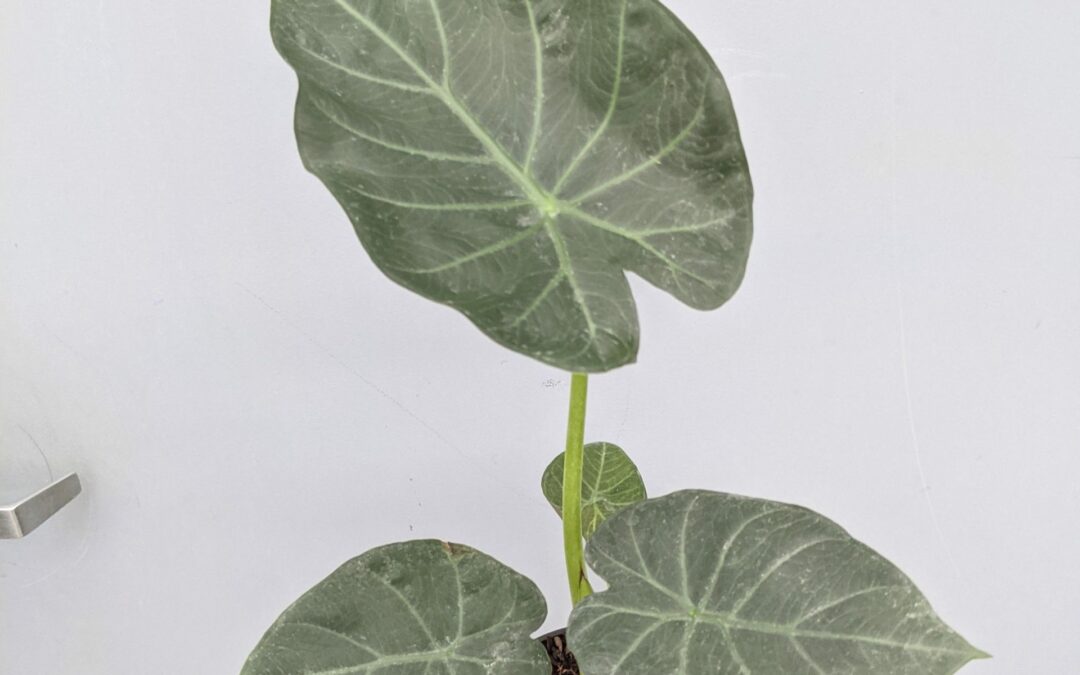Plant people are raving about new hybrids of Alocasia, so we are going to get into more detail about this plant for you!
Alocasia are native to subtropical Asia and Eastern Australia. There are around 92 varieties of Alocasia and many of the plants around the world have been hybridized to create more stunning foliage, patterned stem, or increased hardiness.
This plant has sometimes caused plant enthusiasts frustration, due to their specific needs for light, humidity, and space. Varieties, like the Giant Elephant Ear Alocasia canget to be 15 feet tall. X 8 ft wide so space for them to fit as well as getting their required light can get tricky. There are varieties with sizes that are very manageable. For example, the hybrid Alocasia Amazonia, will get to 2’x3’ H and 1’-2’ W. If you are absolutely loving a tall , giant and wide Alocasia plant, they are a wonderful outdoor plant for the summer, either planted in the ground or in a pot and overwintered inside.
These plants really are tough, but we think because they need to drop leaves or exhibit stunted growth over winter, they are finicky and a bit dramatic. They want to go dormant in the fall/winter if reduced light and humidity. Come spring they usually pop out many more leaves, very quickly, when spring comes around! Do not get too attached to one leaf (we know that’s hard!) because they can drop leaves when there is changing light, rapid growth of new leaves, or other stressors. They will give you many beautiful, fresh leaves in its lifetime to enjoy, so don’t fret if you are given it proper care.
A pest that loves Alocasia is spider mites. When Alocasia are inside with less-than-ideal humid air, spider mites can become more common. Wipe off the leaves with water and spray with Neem oil to help prevent spider mite infestation. That gives you time to regularly check the leaves and treat more aggressively and quarantine them.
Humidity is their best friend. If your plant is inside, place a tray with pebbles under the pot and fill it up to the bottom of your plant pot with water. If you have a bright shade area outside to place your plant in the summer, we recommend trying it out because it provides the humidity it loves.
Water Alocasia when the first few inches of soil are dry. They can handle the drying out of the soil between watering, especially in the winter but make sure to water more often during active growing periods.
During active growth, fertilize once a month while the soil is already moist to avoid burning the roots.
It is important to note that these plants are toxic to cats, dogs, and humans and should be avoided if you have curious animals that will give these a bite.
Give these tough, beautiful plants a try if you want to enjoy an exotic looking specimen!

